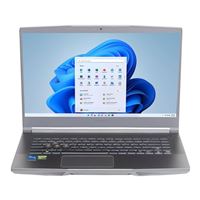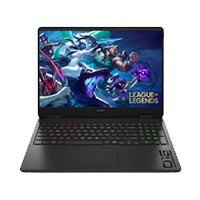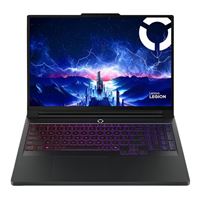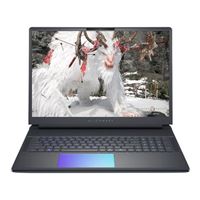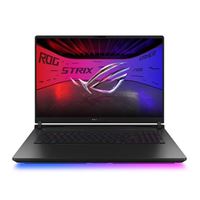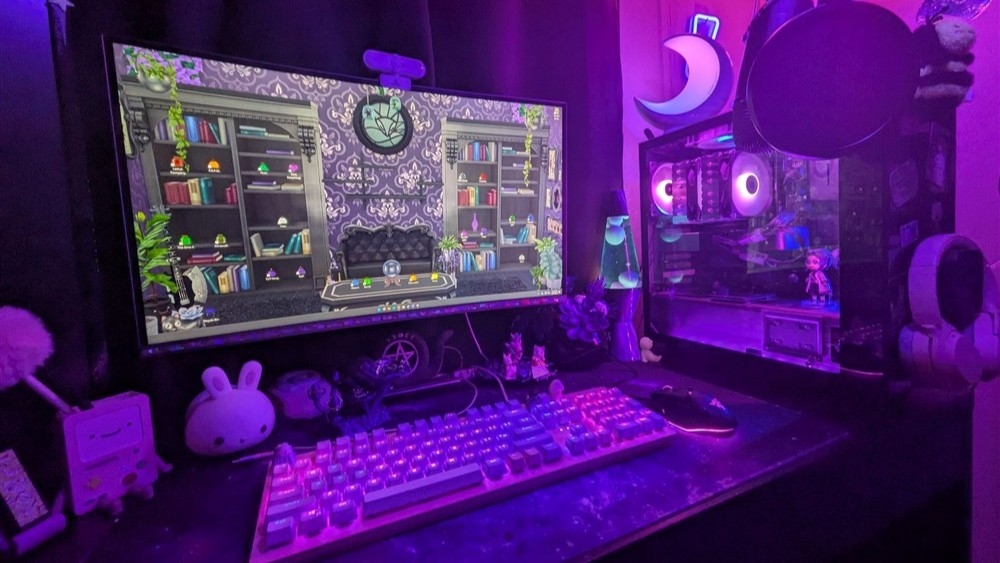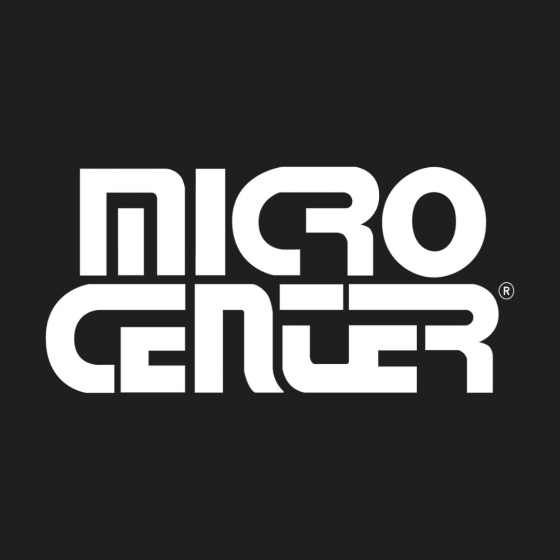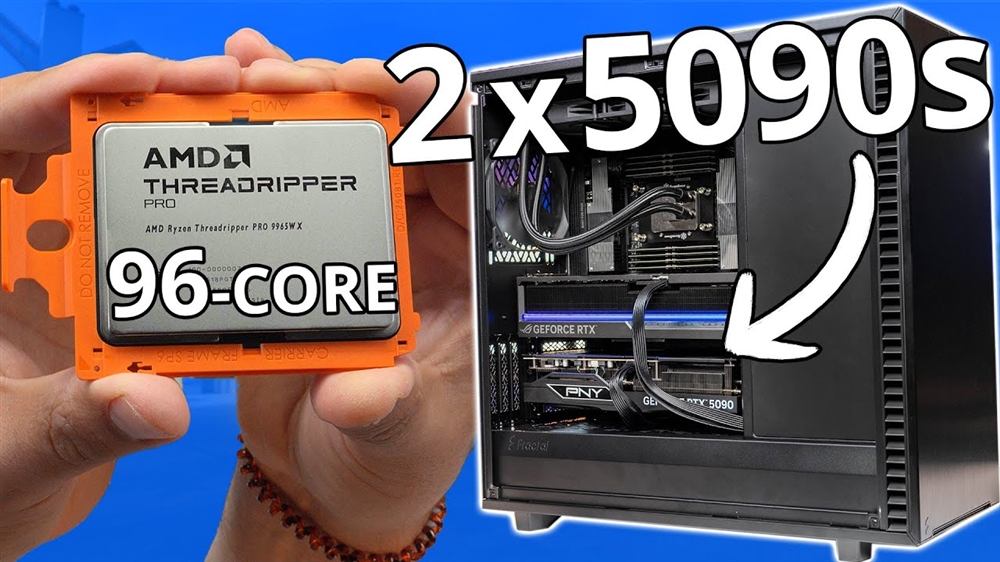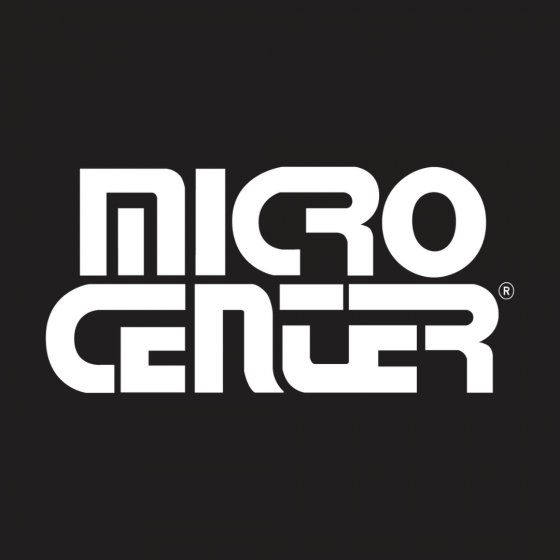The Ultimate Guide To Buying Your Next Gaming Laptop
Looking for the perfect gaming laptop? Discover key factors like CPU, GPU, RAM, display, and cooling systems to find the best gaming laptop for your needs.Buying Guides
Buying a new gaming laptop is an exciting time, but one that has plenty of important decisions to make. Like buying a desktop gaming PC, you need to make sure your new gaming laptops has a good CPU, a powerful graphics card, capable cooling, and plenty of memory and storage. But you also need to ensure it has a good display at the right resolution and panel type for the kind of gaming experiences you want. Not to mention form factor, battery life, and the keyboard and touchpad inputs, among a range of other options.
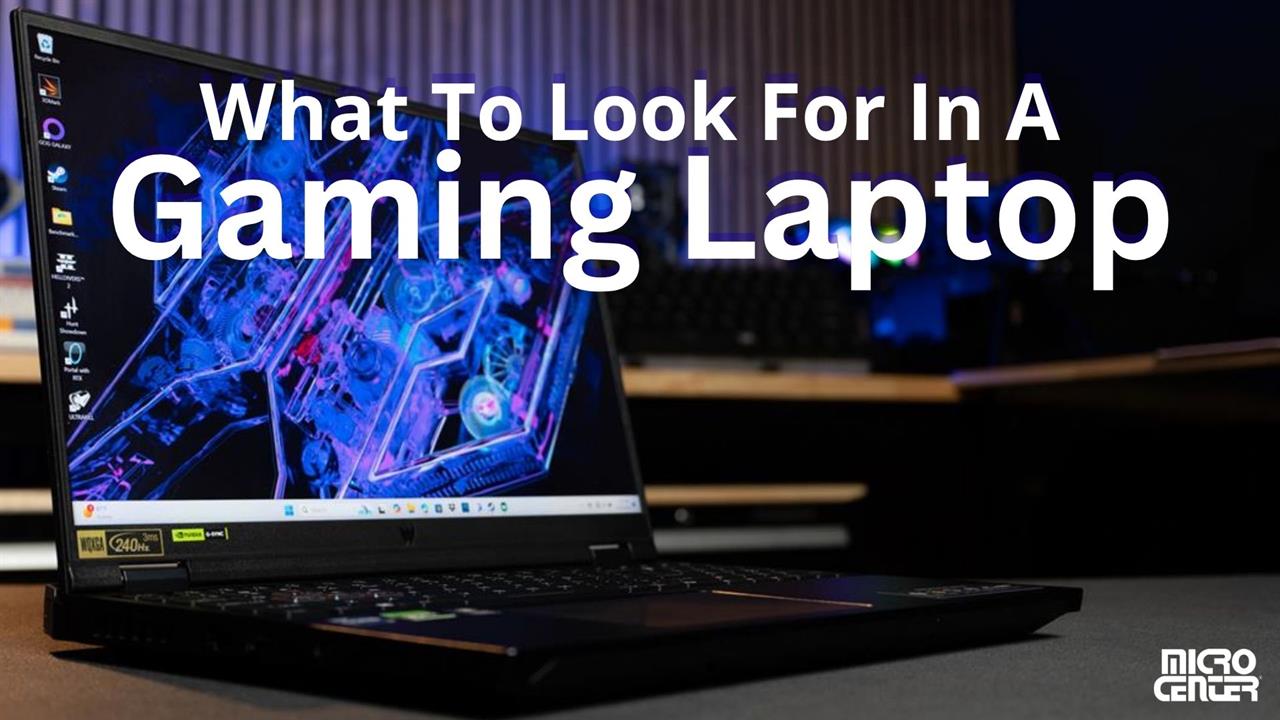 Photo: Jacob Bobo
Photo: Jacob Bobo To help demystify this overtly complicated purchase, let’s dig into what you need to look for in a gaming laptop, so you end up with a laptop that can play everything you want exactly how you want.
From components to comfort, inputs and more, here’s how to buy a gaming laptop.
Performance Factors to Consider
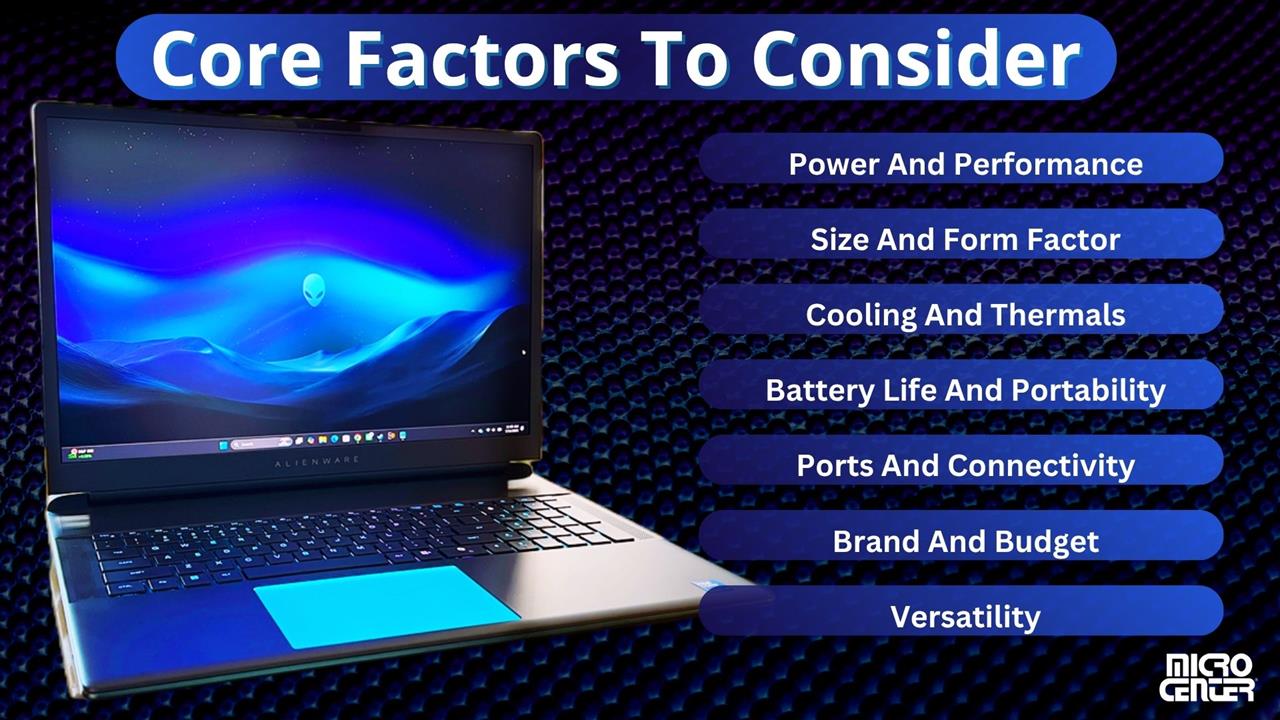 Photo: Dan Ackerman
Photo: Dan Ackerman Here are the most important components to consider when looking at the power of your new gaming machine.
Processor
Although the graphics card, or GPU, does much of the heavy lifting when it comes to rendering games, the CPU has an enormously important part to play too. While tighter budgets are definitely better off funnelling the majority of those dollars into a better graphics chip, you don’t want to scrimp on the CPU either.
The general advice for gaming is to have at least six cores, but that’s a little more complicated with Intel’s dual architecture CPUs. In that case, at least six “Performance” cores is a good baseline for strong gaming performance. Most modern games can make use of eight high-performance cores, though, so higher-end CPUs will give you more performance in certain games. Once you go over 10, though, there’s diminishing gaming returns, with the 12+ core CPUs often designed with professional tasks in mind.
You definitely want to be buying a modern chip, though. For Intel that’s Core Ultra 100 or Core Ultra 200 (and perhaps high-end 14th generation CPUs if you’re on a tighter budget), and for AMD, it’s Ryzen 200, 300, or 9000.
Top gaming laptop processors include the 9955HX3D, Ryzen AI 7 Pro 360, Intel Core Ultra 9 285HX and Core Ultra 7 265H, among others.
Graphics Card
Although laptops don’t have a graphics “card” like desktop PCs do, they still need a standalone GPU. These perform all the 3D rendering in your games, so the faster GPU you have, the better your games will run. Higher-end GPUs enable higher detail settings, higher frame rates, and support for high-end visual features like ray tracing. The latest models also support the latest AI upscaling algorithms, too, which can really boost performance.
If you’re buying a new gaming laptop it’ll almost certainly come with a new(ish) GPU, but it’s always worth double checking, as occasionally new models ship with a last gen GPU alongside a new CPU. For AMD, you want an RX 7000 or 6000 chip (or RX 9000 if that next-generation debuts later this year). For NVIDIA, you want something from the RTX 50 or RTX 40 series.
Standout options include NVIDIA’s RTX 5090 and 5080 mobile, which represent the fastest laptop graphics available. More mid-range options include the RX 7800M, or RTX 4070 Ti, while entry-level GPUs like the RX 6600M or RTX 4050 are far more affordable.
Do note, however, that laptop graphics performance is as much dictated by the available power and cooling, so individual laptops with the same GPU may have drastically different performance. Be sure to read individual laptop reviews to find out how they actually perform in the real world.
RAM
Although you can go into the weeds with memory and try to get extra fast RAM or memory with chips from a certain manufactures, most users won’t need to go that far into the world of RAM; just make sure you have enough.
For casual gaming, don’t accept less than 16GB on your laptop, as even lightweight games are demanding more and more memory in 2025. If you’re looking to play some of the most demanding games, though, you’ll need 32GB. Some of the top games demand that much just to run, and even games that don’t will run much better if you have more than 16GB of RAM. Some of these games can use as much as 20GB of RAM just for themselves, so making sure you have 32GB gives your laptop plenty of extra memory to handle background tasks and multitasking.
You could opt for 64GB if you are doing streaming and gaming, video editing, or other demanding professional tasks as well as playing, but for straight gaming, 32GB is plenty and you won’t see much as benefit as you add more.
Storage
You can get a lot of storage space in modern gaming laptops, but how much space do you really need? Unless you’re installing 10s of giant games, 1TB or 2TB of storage is usually plenty for even larger gaming libraries. Most gaming laptops have the option of a second SSD or replaceable main SSD, so you can always upgrade later. You always have the option of an external SSD, too, though that drive’s performance won’t match the internal SSDs and your games will load slower.
Display Factors to Consider
How good the display looks on your gaming laptop can have a big impact on your gaming enjoyment. Likewise, faster gaming displays can make a big difference to competitive play.
Screen Size
The size of the screen on your laptop dictates more than just what it’s like to play on. Sure, larger displays give you more screen space to see your games more clearly and in greater detail, but they also add considerable weight and size to a laptop, and they can drain the battery faster, too.
Here are some of the most common laptop screen sizes and who they’re best suited for:
- 17/18-inch: These are the biggest screens you’ll find on modern gaming laptops and they can be fantastic for expansive RTS and 4X games. They tend to be very heavy, though and battery life is typically low. Only opt for one of these if you think you’ll be gaming predominantly in a fixed position with access to power outlets.
- 16/15-inch: These laptops are the perfect middle-ground. They have lots of screen space to enjoy your favorite games’ high-end visuals, but the laptops tend to be portable enough that they can be carried around, and you could even game with it on top of your lap if needed, like some sort of laptop.
- 13/14-inch: This is where you can find some impressively portable gaming machines. Although the screens are notably smaller, which can make playing games with complicated interfaces a little trickier, you get a laptop that can game just about anywhere. Battery life tends to be much better, too, and you’ll easily find modest spec 13-inch gaming laptops that can go for 10 hours or more.
- 10/11-inch: These tend to be more akin to gaming tablets with attachable keyboards than gaming laptops, but they’re certainly viable for gaming on the go. You can equip them with game controllers like a DIY Steam Deck, or game with it like a normal laptop. Battery life is usually far longer, but the smaller screen space means text heavy games aren’t always ideal, so consider how viable your favorite games are on a device like this before buying.
Resolution
Like external gaming monitors, you can find a full spread of resolutions in gaming laptop displays, from 1080p right up to 4K. The big difference between these kinds of displays and a monitor, though, is size. While 1080p might start to look a little blurry on monitors over 22-inches, it can still look great on a 16-inch laptop.
Similarly, while 4K gaming laptops do look crisper, even at smaller sizes, it’s certainly not as noticeable. Higher resolutions also drain the battery life more, and demand much more from the onboard GPU, so you can expect lower overall frame rates. Depending on your GPU, you might have to turn down the visual settings, too.
For a good middle ground, 1440p resolution at higher frame rates can look great on any size of gaming laptop. For premium experiences 4K is the best, but 1080p still looks good, especially with new visual features like ray tracing enabled.
Refresh Rate
Arguably just as important as resolution, a gaming laptop’s refresh rate effects how smooth the action looks. Higher refresh rates let a game run at higher frames per second, leading to sleeker animation and a more responsive gaming experience. Anything up to 240 Hz can make a real difference to how fast you can respond to inputs, which can make fast-paced games feel more immersive and even give you a slight competitive edge.
There are diminishing returns, though. Once you get higher than 240 Hz, most professional gamers can’t feel much of a difference and it often means sacrificing on resolution or other features to make it possible. Pick the highest refresh rate you can find for ultra competitive play, but for more everyday gaming anything between 120 Hz and 240 Hz looks and feels great.
Panel Type
What type of display does your gaming laptop have? Here are some of the common options and what they’re like:
- IPS: Offers good color representation, though not the best contrast, which can leave darker areas of the screen looking more washed out. Viewing angles are great, though, so they’re excellent for cooperative or couch multiplayer play.
- VA: These have better contrast but can suffer from weaker color representation, so they aren’t the best for vibrant games. Viewing angles are a bit weaker too, so if you’re going to be playing with other people, opt for something else.
- OLED/QD-OLED: These are the peak of gaming monitor display technology. They’re ultra fast and responsive, have incredible contrast, and super vibrant colors. They used to lack brightness, but that’s largely been fixed in the latest panels. The only downside is the price, as OLED tends to be more expensive, so you may need to budget accordingly to get one.
Other Factors to Consider
Even gaming laptops are made up of more than their internal components and display and they all contribute to the experience of using it. Here’s what else to look out for.
Battery Life
While this is one of the top considerations for everyday use, gaming laptops don’t tend to need quite so much of it. If you’re gaming on the go then calculate how much time you think you’ll want to be playing away from the socket and try to find one that’s rated to last that long (while gaming, mind you. A lot of battery life stats for laptops are for “mixed use”).
If you’re going to mostly be gaming at a desk, though, see if you wouldn’t mind plugging it in to play. You tend to get the best gaming performance when it’s plugged in and then you needn’t worry about battery life so much.
If you want a machine that can last all day and then do some gaming without needing a recharge, though, there are some awesome options. Look out for some of the ultra-efficient gaming machines and you can get 10+ hours of battery and still have some real performance for high resolution gaming.
Portability
Kind of like battery life, this really depends on your usage and where you want to game. If you’re playing at a desk and just want to be able to play in a few different spots in your home, then portability is a non-issue; grab a big, powerful machine and get to gaming
If you want to game on a train or plane, though, you’ll want something more portable. That typically means smaller size so it can fit where you need, but weight and thickness also matter. A laptop over 5lbs is going to be tiring to carry around all day, and anything over 3lbs will feel heavy to hold in one hand.
Cooling and Thermal Management
Better cooling often means better performance in gaming laptops, but it can mean higher noise levels, too. Look at reviews of the laptop you’re interested in to see what they think of the cooling. If it’s particularly noisy, you may have to game in headphones (though you probably are already). High-end laptops need good cooling to avoid overheating, though, so expect a consistent gust of hot air out the back or side if you’re pushing it hard.
Keyboard
Laptop keyboards have come a long way in the past few years, with modern laptop keyboards being surprisingly good. There are low-profile scissor keys which are springy and comfortable, while some gaming laptops even manage to fit mechanical switches for a very responsive gaming experience.
This is much more of a nice-to-have, but if you’re used to gaming on a mechanical keyboard, it might be getting a gaming laptop that has one for a more familiar feel.
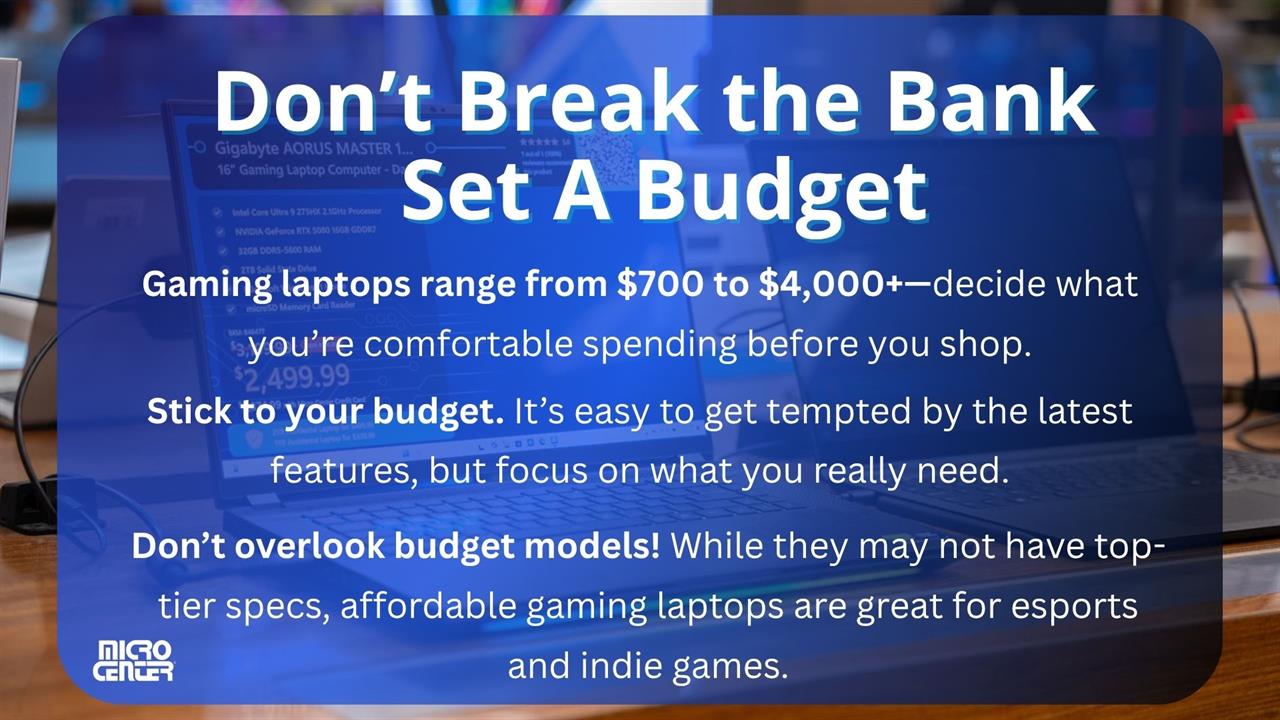 Photo: Jacob Bobo
Photo: Jacob Bobo Brands and budget
Now you’ve got all the information you need to find the right laptop, it can still feel a little daunted getting started. Fortunately there are some straightforward ways to narrow down your search.
The first is to set a strict budget. With gaming laptops you can spend anywhere from $700 right up to $4,000, so knowing what you can spend and sticking to that is important. Limit yourself to a particular range and try not to be upsold – there’s always something new and shiny just out of reach when it comes to gaming hardware. And don’t be put off by budget gaming laptops. While they lack the big performance and features of the top models, they are perfectly good for esports and indie gaming.
Leave a little room for extras, though. You may want to get a new gaming headset, laptop cooling pad, or a lightweight gaming mouse for competitive play.
Look to the big name brands too, for inspiration. While smaller names can offer good deals, the well-known brands tend to offer the best blends of price, performance, and portability. Some of the best gaming laptop brands include: Dell, Asus, MSI, HP, Razer, PowerSpec, Lenovo, Acer, and Gigabyte.
Now you know your way through all the various components and features you want to look for in a gaming laptop, you should be ready to start your search for real. If you spend a little time reading reviews and double checking specifications, you should end up with the perfect gaming laptop for you and your needs. And hopefully one that remained within your budget.
Read more: PC laptop and desktop resources
Jon Martindale is a freelance technology journalist and writer from Gloucestershire, UK. He's written for a range of publications over a 20-year career, including DigitalTrends, USNews, Forbes, and Lifewire, among many others. Over that time he's written countless how-to guides, best-of lists, hands-on reviews, and in-depth op/ed features.Comment on This Post
See More Blog Categories
Recent Posts
This Week in AI: The AI Boom Isn't so Artificial After All
For July 25, 2025: AI continues powering tech earnings, White House announces new AI plan, Notebook LM improvements, jobs data, Claude now works with Canva.
Continue Reading About This Week in AI: The AI Boom Isn't so Artificial After AllWatch: Let's Build A Double 5090 Threadripper PRO Workstation PC
AMD Threadripper PRO processors are now available at Micro Center, so what better way to celebrate than to build the beefiest PC we could come up with, like two RTX 5090s!
Continue Reading About Watch: Let's Build A Double 5090 Threadripper PRO Workstation PC


